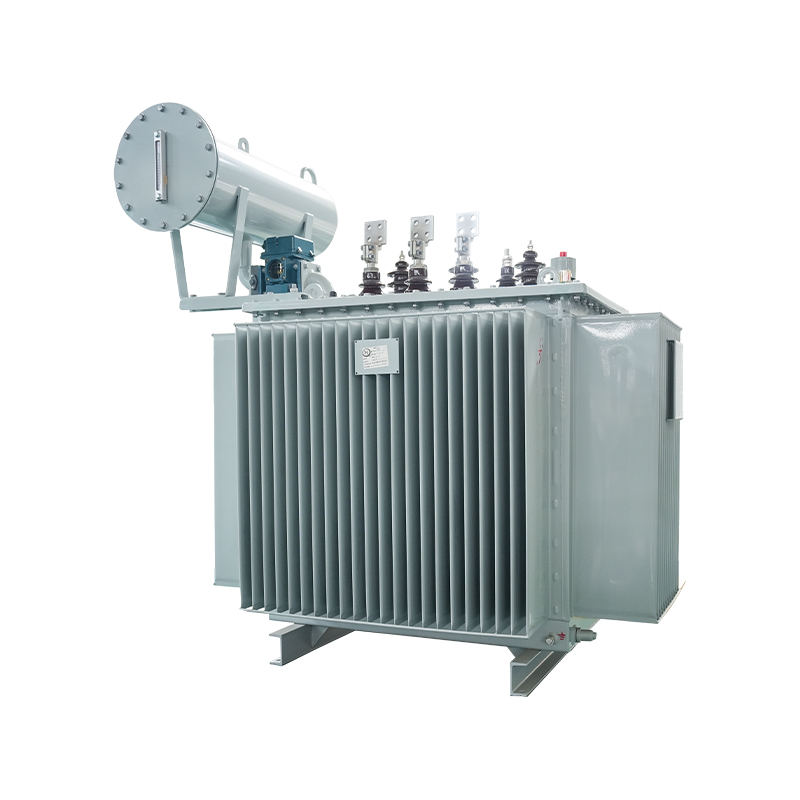Energy-Saving Single-Phase Oil-Immersed Pole-Mounted Transformer
15KVA 13.8KV/0.4KV
See DetailsTemperature fluctuations can have a profound impact on the performance and lifespan of distribution transformers, which are critical components in power distribution networks. These transformers are designed to step down the voltage from high transmission levels to lower levels suitable for use in homes, factories, and other establishments. However, like all electrical equipment, transformers are vulnerable to temperature changes. The effects of temperature can influence everything from operational efficiency to the long-term durability of the transformer, ultimately impacting energy costs, system reliability, and maintenance schedules.

At the most basic level, temperature variations affect the insulating oil used in the transformer. This oil plays a crucial role in cooling the transformer by dissipating heat generated during the electrical transformation process. The corrugated oil tank in some modern distribution transformers is designed to accommodate these changes by expanding and contracting as temperatures rise and fall. However, constant exposure to extreme temperature fluctuations can degrade the oil over time, reducing its insulating properties and cooling effectiveness. As the oil ages and becomes less effective, the transformer's components may overheat, leading to reduced efficiency, premature wear, or even failure. In regions with extreme temperature ranges, it's particularly important to monitor oil quality regularly and replace it when necessary to ensure optimal performance.
The physical components inside the transformer, especially the windings and insulation, are also directly impacted by temperature variations. Every time the transformer operates in high-temperature conditions, the internal temperature rises, causing thermal stresses on the copper or aluminum windings. Over time, this heat can degrade the insulating material surrounding the windings, accelerating the aging process. If the transformer experiences frequent temperature spikes, especially combined with high load conditions, the insulation may become brittle, leading to short circuits or complete failure of the transformer. In contrast, extremely cold temperatures can cause certain materials, especially those that are not well-suited to temperature extremes, to contract, which could lead to mechanical stresses or even cracks in critical components.
In addition to the direct effects on the insulating oil and internal components, temperature fluctuations also impact the operational efficiency of the transformer. As the temperature increases, the resistance of the copper windings may increase, reducing the efficiency of energy conversion. Transformers are designed to operate within a specific temperature range to maintain high efficiency. Exceeding this range can lead to greater losses in the form of heat, which further exacerbates the cooling challenges. Furthermore, when a transformer operates at higher temperatures, it is more likely to experience overloads, as thermal expansion could lead to changes in load handling characteristics. Overloading can shorten the lifespan of the transformer and increase the likelihood of insulation breakdown.
From a lifespan perspective, the combined stresses of heat and cold on a distribution transformer can significantly reduce its service life if not managed properly. Many modern transformers use sophisticated cooling systems, such as fans or oil pumps, to help mitigate temperature extremes. However, even with these systems, transformers still face degradation due to the thermal cycling that occurs during daily operations, especially during periods of high demand when the transformer operates at full capacity. Long-term exposure to frequent temperature fluctuations not only strains the mechanical parts of the transformer but can also lead to more frequent maintenance and potential failures, which increases operational costs.
In regions that experience wide temperature fluctuations, it is critical to consider the design and construction of the transformer. Factors like the transformer’s size, the type of insulating materials used, and the cooling mechanisms in place can help mitigate the negative effects of temperature changes. Transformers in these areas may require special oil types with better temperature tolerance or more advanced cooling systems to handle higher thermal loads. Regular monitoring and predictive maintenance become essential in identifying early signs of overheating or oil degradation, enabling operators to address potential issues before they lead to catastrophic failures.
Contact Us